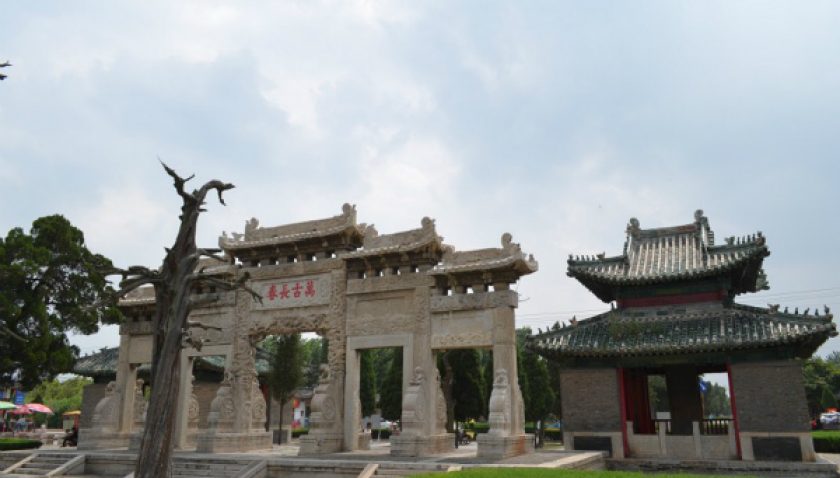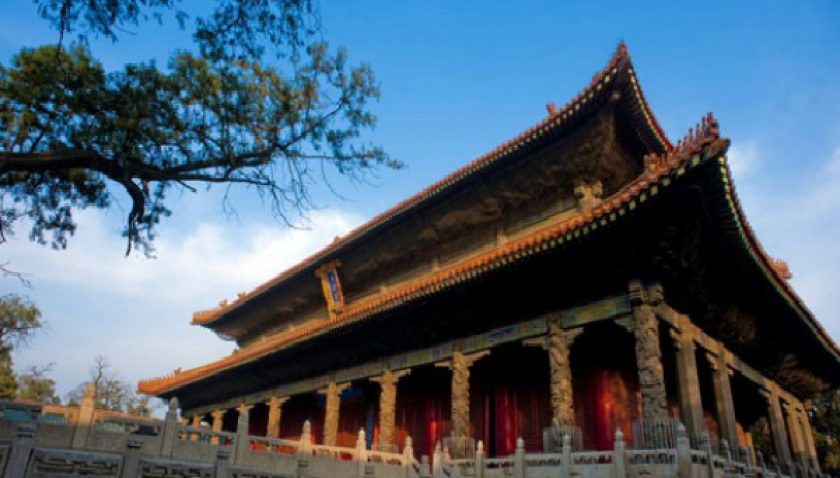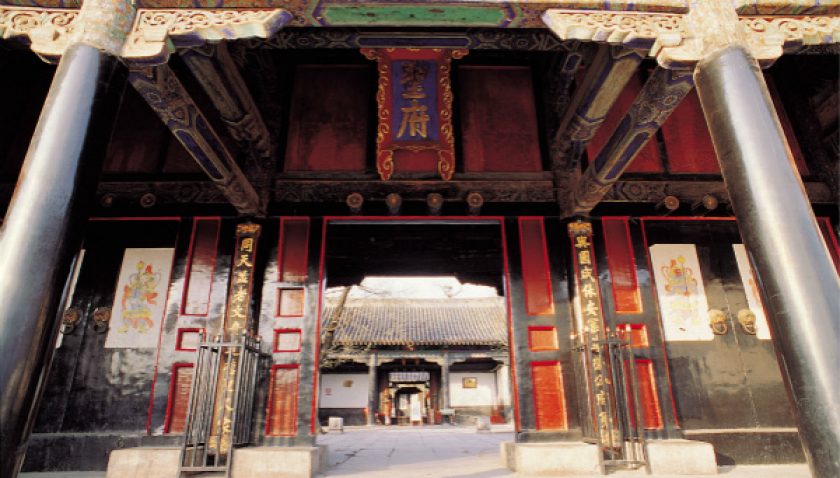Within two years after his death, Confucius’ former house in Qufu was already consecrated as a temple by the Prince of Lu. In 205 BC, Emperor Gao of the Han Dynasty was the first emperor to offer sacrifices to the memory of Confucius in Qufu. He set an example for many emperors and high officials to follow. Later, emperors would visit Qufu after their enthronement or on important occasions such as a successful war. In total, 12 different emperors paid 20 personal visits to Qufu to worship Confucius. About 100 others sent their deputies for 196 visits. The original three-room house of Confucius was removed from the temple complex during a rebuilding process undertaken in 611 AD. In 1012 and in 1094, during the Song Dynasty, the temple was extended into a design with three sections and four courtyards, around which eventually more than 400 rooms were arranged. Fire and vandalism destroyed the temple in 1214, during the Jin Dynasty. It was restored to its former extent by the year 1302 during the Yuan Dynasty. Shortly thereafter, in 1331, the temple was framed in an enclosure wall modelled on the Imperial palace. After another devastation by fire in 1499, the temple was finally restored to its present scale. However, further additions to the buildings and the decorations were made. In total, the Temple of Confucius has undergone 15 major renovations, 31 large repairs, and numerous small building measures.
The descendants of Confucius lived in the Kong family mansion located to the east of the temple. They were in charge of tending to the temple and cemetery. In particular, they were in charge of conducting elaborate religious ceremonies on occasions such as plantings, harvests, honoring the dead, and birthdays. The Kong family was in control of the largest private rural estate in China. The first mansion was built in 1038 during the Song dynasty and was originally connected directly to the temple. During a rebuilding in 1377 directed by the first Ming dynasty Emperor, it was moved a short distance away from the temple. In 1503, it was expanded into three rows of buildings with 560 rooms and – like the Confucius Temple – 9 courtyards. The mansion underwent a complete renovation in 1838 only to perish in a fire 47 years late in 1887. It was rebuilt two years later where the Emperor covere the cost of both 19th century renovations. Today, the mansion comprises 152 buildings with 480 rooms, which covers an area of 12,470 square meters. The family mansion was inhabited by descendants of Confucius until 1937, when Confucius’ descendant in the 76th and 77th generations fled to Chongqing during the Second Sino-Japanese War and later during the Chinese Civil War to Taiwan, where the head of the family still resides.
The Cemetery of Confucius lies to the north of the town of Qufu, the oldest graves found in this location date back to the Zhou Dynasty. The original tomb erected here in memory of Confucius on the bank of the Sishui River had the shape of an axe. In addition, it had a brick platform for sacrifices. The present-day tomb is a cone-shaped hill. When Red Guards opened it during the Cultural Revolution no human remains were found in it. Tombs for the descendants of Confucius and additional stela to commemorate him were soon added around Confucius’ tomb. Since Confucius’ descendants were conferred noble titles and were given imperial princesses as wives, many of the tombs in the cemetery show the status symbols of noblemen. Tombstones came in use during the Han Dynasty; today, there are about 3,600 tombstones dating from the Song, Yuan, Ming and Qing dynasties still standing in the cemetery. In 1331 construction work began on the wall and gate of the cemetery. In total, the cemetery has undergone 13 renovations and extensions. Eventually by the late 18th century, the perimeter wall reached a length of 7.5 km, enclosing an area of 3.6 square kilometers. In this space, the tombs of more than 100,000 descendants of Confucius who have been buried there over a period of about 2000 years, can be found. The oldest graves date back to the Zhou Dynasty, the most recent of which belong to descendants in the 76th and 78th generation. The corpse of the duke of Qufu in the 76th was removed from its grave and hung naked from a tree in front of the palace during the desecration of the cemetery in the Cultural Revolution. More than 10,000 mature trees give the cemetery a forest-like appearance. A road runs from the north gate of Qufu to the exterior gate of the cemetery in a straight line. It is 1266 m in length and lined by cypresses and pine trees. Along this road lies the Yan Temple, dedicated to Confucius’ favorite student.



